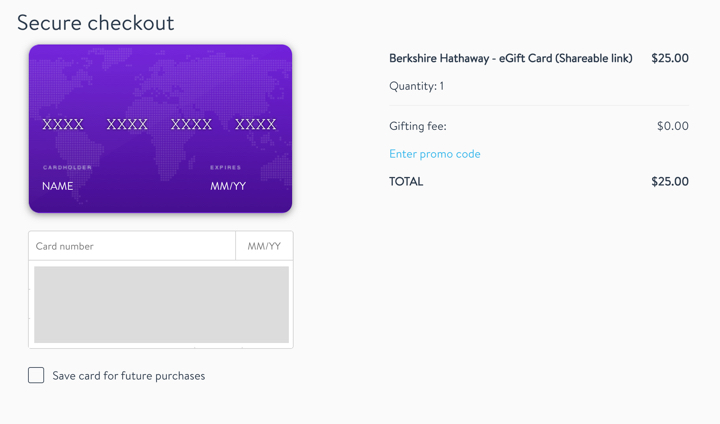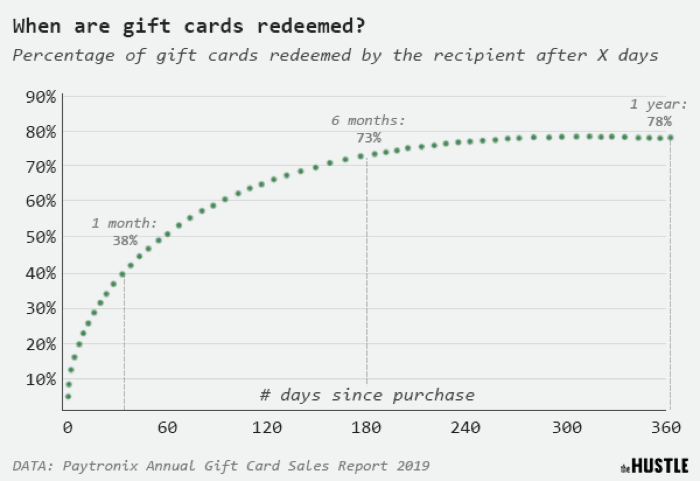 Stockpile is a niche stock broker that is designed for beginner investors, especially children. You can purchase a gift card for $25, $50, $100, etc. and then a child/parent can redeem that gift card an open their own custodial brokerage account. They receive fractional shares of Apple, Amazon, Google, Berkshire Hathaway, or an index fund ETF which they can watch go up and down in value (or sell). Their tagline is “Starting is everything.”
Stockpile is a niche stock broker that is designed for beginner investors, especially children. You can purchase a gift card for $25, $50, $100, etc. and then a child/parent can redeem that gift card an open their own custodial brokerage account. They receive fractional shares of Apple, Amazon, Google, Berkshire Hathaway, or an index fund ETF which they can watch go up and down in value (or sell). Their tagline is “Starting is everything.”
There are no monthly fees or account minimums. However, until now, they did have trading fees and gift card fees. Before July 2021, Stockpile had a trading fee of 99 cents if paid with cash (fund with bank account) and 99 cents + 3% if paid with credit/debit cards. There was also an additional $2.99 e-gift fee for the first stock (+ 99 cents for each additional company). Physical gift cards had slightly higher fees. Here is how much it used to cost to gift $100 of stock:
If you give Jack one stock, the gifting fee is $2.99 + 3%. To give $100 of Nike stock, for example, you’ll pay $100 + $2.99 + $3.00 = $105.99.
No trading fees. No debit/credit card transaction fees. As of July 7th, 2021, Stockpile announced that they are getting rid of trading fees and gift card fees. You can buy a $100 stock gift card with a credit card for a total price of $100, and the recipient will receive the full $100 of Nike stock or whatever. You can email an “e-gift card”, or print out a physical voucher. (The giver can put a suggested company like Apple on the card, but the recipient can choose to buy a different company.) Here’s a screenshot from the e-mail they send out:

Here’s what they say regarding payment methods:
What payment methods do you accept?
We try to make buying stock as easy as accessible as we can! That means we offer a multitude of ways to get started with investing. The cheapest and most simple is by linking your bank to your Stockpile account. You can link your bank account by following the instructions here. You can also add cash instantly to your Stockpile account using a debit card.When buying stock on the web, we accept all major debit cards.
You’ll notice it is silent regarding credit cards. A quiet quirk: You can’t buy stocks directly with a credit card for your own Stockpile account, but you can buy e-gift cards using a credit card which can then be redeemed for stock by anyone. Here is a screenshot of the ability to buy a gift card using a credit card with no fees.

Whenever a 3% credit card transaction fee is removed, it makes it more attractive to pay with a credit card in order to generate cash back or airline miles rewards. The possibility of earning 2% cash back upfront on every stock purchase sounds intriguing, but a potential drawback to this is that Stockpile isn’t a full-service brokerage firm, it’s more of a stock piggy bank for kids with limited customer service and support features. (It’s still SIPC-insured.) I don’t know that I’d want to build up my primary portfolio there, even if they do offer broad ETFs like Vanguard Total Stock Market ETF (VTI). Unfortunately, they don’t offer IRAs, so you can’t do your annual IRA contribution.
Another option would be to buy a cash-like ETF. Two options in their catalog are PIMCO Enhanced Short Maturity Active ETF (MINT) and Goldman Sachs Access Treasury 0-1 Year ETF (GBIL). Potential drawbacks here are that the largest gift card you can buy is for $2,000, and they may limit how many gift cards you can purchase.
I tested this out myself as I already have a Stockpile account from a previous promotion, and I was able to successfully buy a $25 gift card using a Chase credit card, but another credit card was rejected. The purchase total was exactly $25, and it was redeemed for exactly $25 of stock (Berkshire Hathaway to avoid dividends and thus extra tax paperwork).
How will Stockpile make money without charging even credit card transaction fees? Even if Stockpile accepts “payment for order flow”, their volume must be relatively low (no daytraders here) and the spread percentage would be far less than 3% on a trade. A better guess is that they found their “breakage” to be sufficient to cover the fees, which refers to the fact that 20% of all gift cards are never redeemed even after a year. (Ever notice how many gift cards are 20% off face value at Costco and Sam’s Club?)

You pay upfront for the gift card, but if they are never redeemed, then Stockpile just gets to keep that as profit. Their breakage is probably less than 20%, but perhaps it is enough for them to make this move.
Bottom line. If you want to teach a kid about stock investing by giving them actual shares of stock, Stockpile is a convenient way to do so and now has no trading fees and no gift card purchase fees. Spend exactly $100 on a gift card, even using a credit card, and they’ll get exactly $100 worth of stock.
 The Best Credit Card Bonus Offers – 2025
The Best Credit Card Bonus Offers – 2025 Big List of Free Stocks from Brokerage Apps
Big List of Free Stocks from Brokerage Apps Best Interest Rates on Cash - 2025
Best Interest Rates on Cash - 2025 Free Credit Scores x 3 + Free Credit Monitoring
Free Credit Scores x 3 + Free Credit Monitoring Best No Fee 0% APR Balance Transfer Offers
Best No Fee 0% APR Balance Transfer Offers Little-Known Cellular Data Plans That Can Save Big Money
Little-Known Cellular Data Plans That Can Save Big Money How To Haggle Your Cable or Direct TV Bill
How To Haggle Your Cable or Direct TV Bill Big List of Free Consumer Data Reports (Credit, Rent, Work)
Big List of Free Consumer Data Reports (Credit, Rent, Work)
Thank you for this. FWIW I was able to buy 5 x $2,000 gift cards with my Citi 2% card without a hitch, May try an AMEX card in a few days. Hopefully I can park it all into a cash like ETF as you mention for child #1.
Thank you for this. FWIW I was able to buy 5 x $2,000 gift cards (all in one transaction) with my Citi 2% card without a hitch, May try an AMEX card in a few days. Hopefully I can park it all into a cash like ETF as you mention for child #1.
Should I open the account under my name instead of my kid’s name since federal financial-aid formula expects students to contribute 20% of savings, versus a maximum of 5.6% of savings for the parents.
That’s a tricky question. If your goal is simply to save for college, then a 529 account might be a better option since it can grow tax-free if used for college, and is an asset of the parent.
In my opinion, a custodial account can be used in smaller balances when used as an educational tool. With a small balance, it is still taxed at a relatively low rate. You can use it an an educational tool and let your child control it and even make a few mistakes (learning opportunity). If it ends up growing to a big number, then paying some taxes is just part of the game, and eventually it will become your adult child’s assets to control.